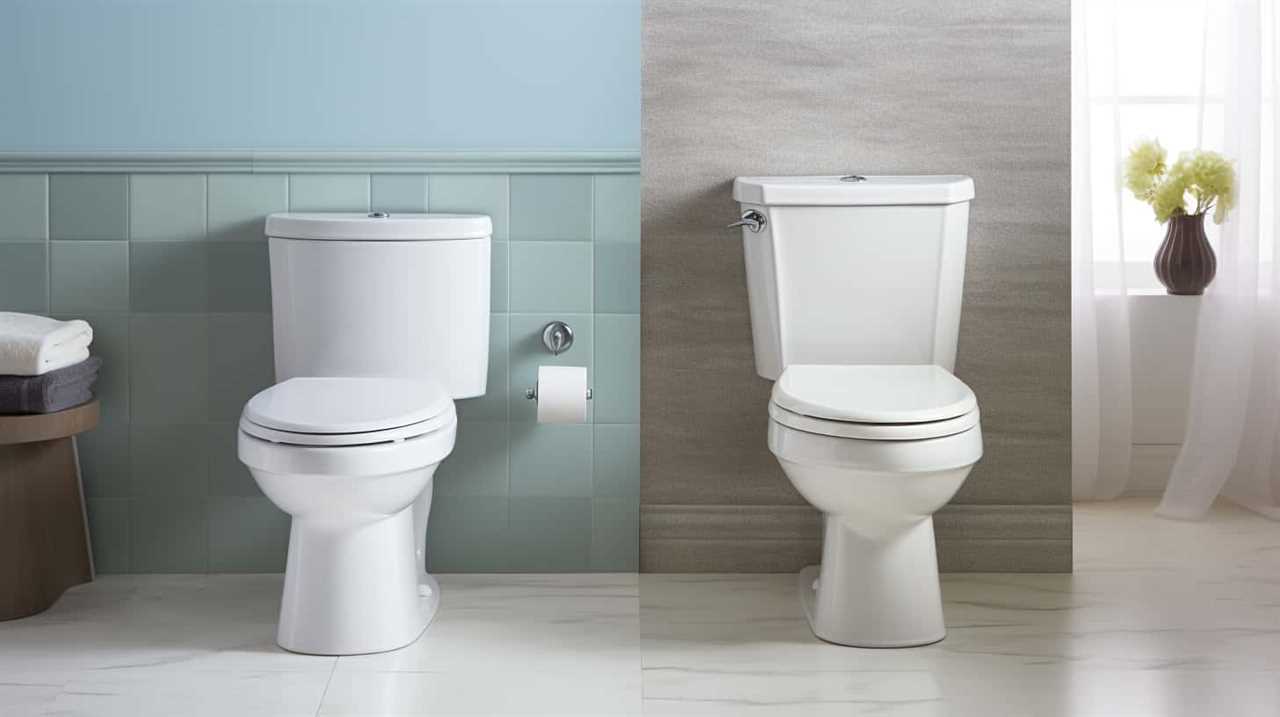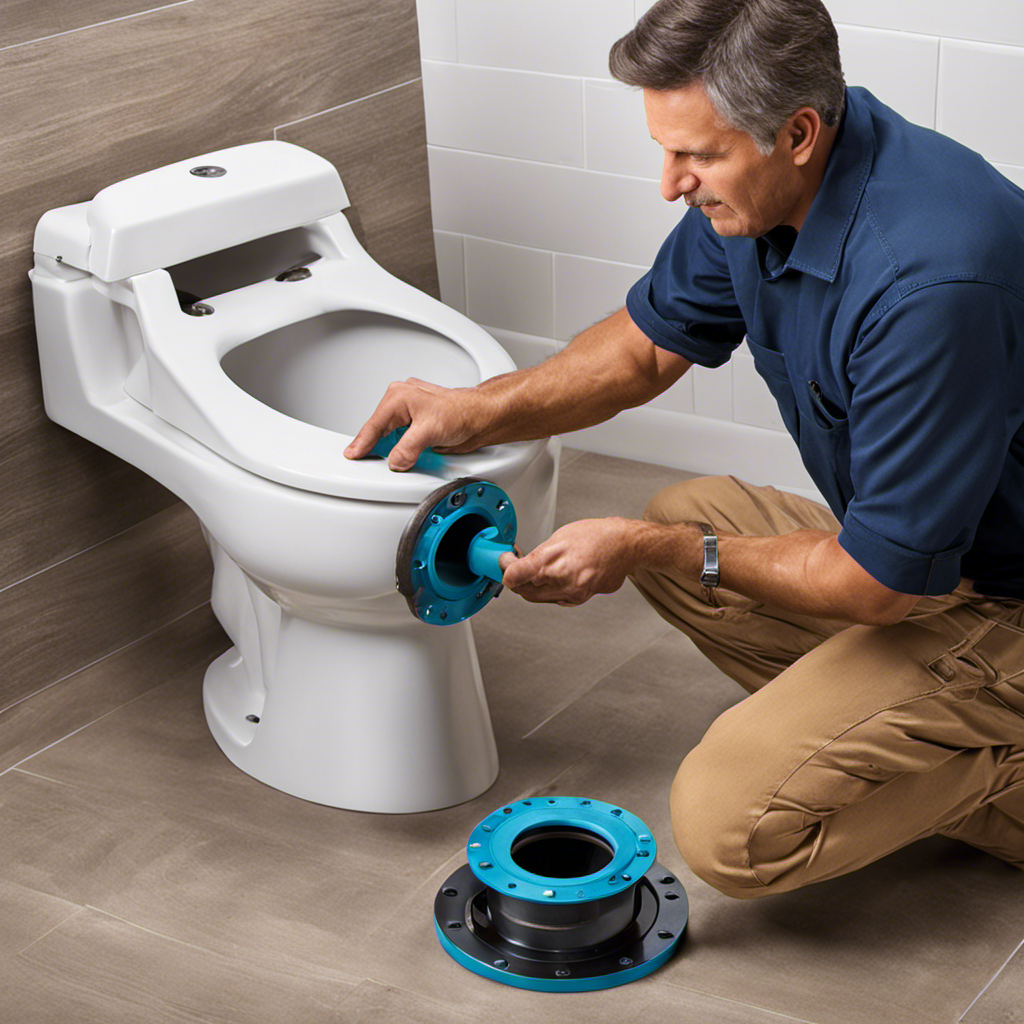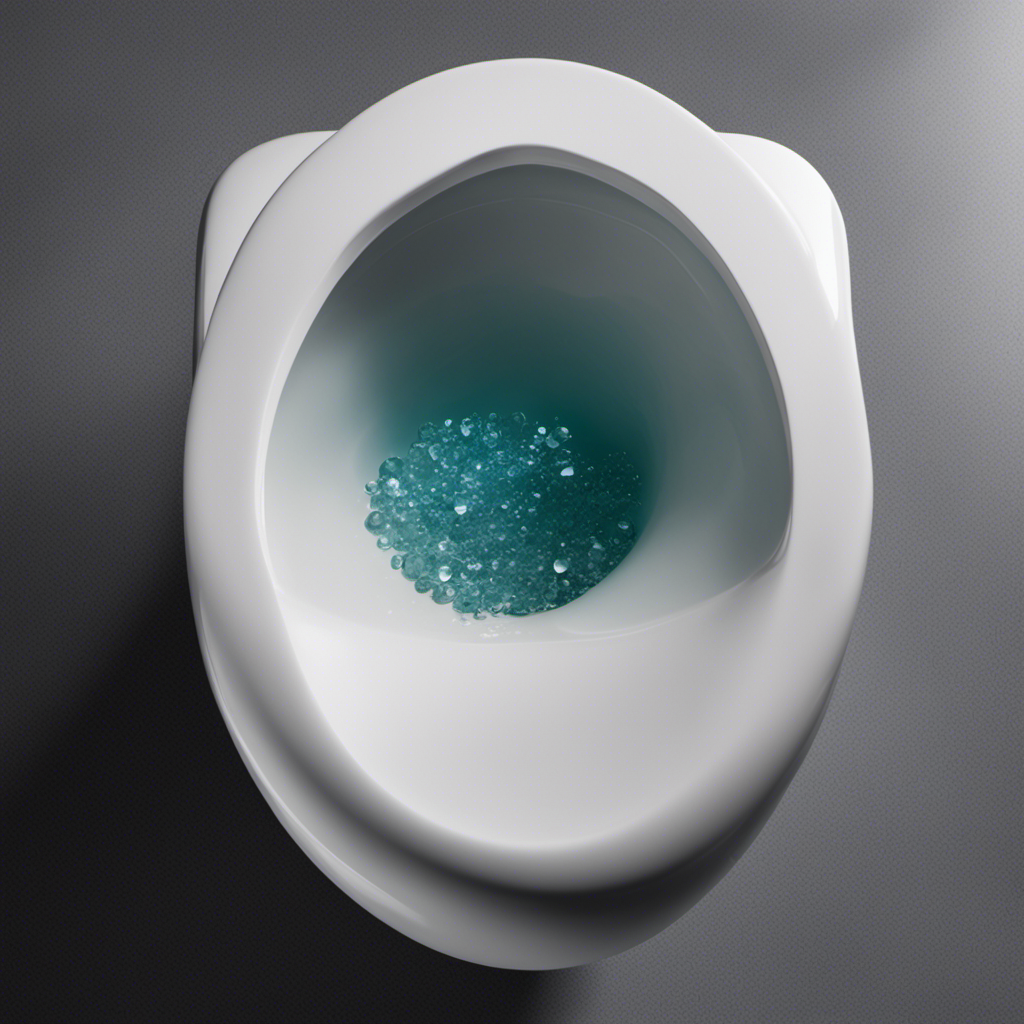Have you ever wondered why we can flush toilet paper but not tissues? It seems like they are made of similar materials, so why the difference?
In this article, we will explore the composition of toilet paper and tissues, and delve into why toilet paper dissolves in water while tissues do not.
We will also discuss the impact of flushing tissues on plumbing systems and the environmental concerns associated with it.
Finally, we will provide alternatives to flushing tissues and proper disposal methods.
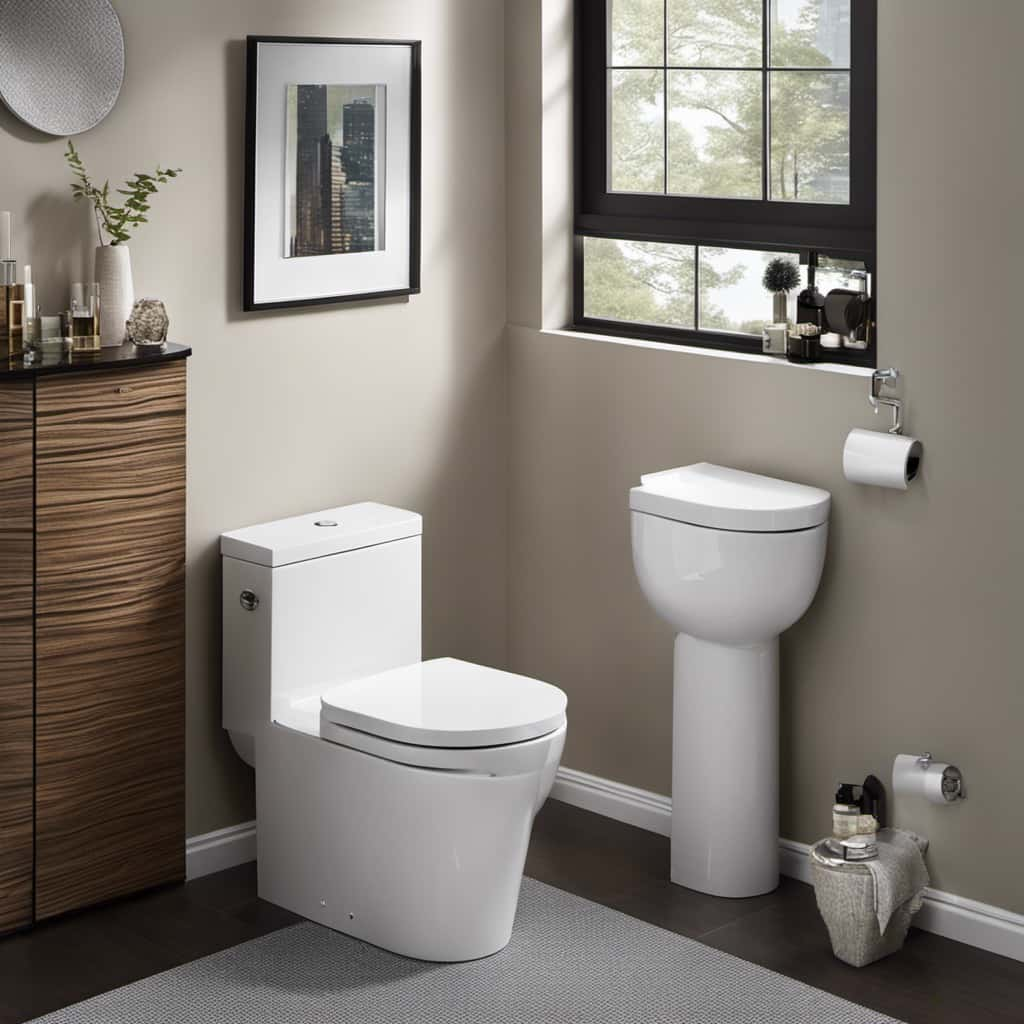
Key Takeaways
- Toilet paper is designed to dissolve easily in water due to its fiber type and manufacturing process.
- Tissues have higher structural integrity and a slower decomposition rate compared to toilet paper, making them less suitable for flushing.
- Flushing tissues can lead to clogs in plumbing systems and costly repairs.
- Proper disposal methods for tissues include using designated waste bins or composting, using biodegradable tissues, and reducing tissue waste by using reusable cloth wipes.
The Composition of Toilet Paper Vs. Tissues
The composition of toilet paper differs from that of tissues in terms of their structural integrity and ability to break down in water.
Toilet paper is specifically designed to dissolve in water easily, making it suitable for flushing down the toilet without causing clogs or blockages in the plumbing system. This is achieved through the manufacturing process of toilet paper, which involves using shorter fibers and less chemical additives compared to tissues.
On the other hand, tissues are made to be more durable and have higher structural integrity, allowing them to withstand moisture and friction during use. Tissue paper finds its uses in various applications such as facial tissues, paper towels, and napkins.
Now that we understand the composition of toilet paper and tissues, let’s delve into why toilet paper dissolves in water.
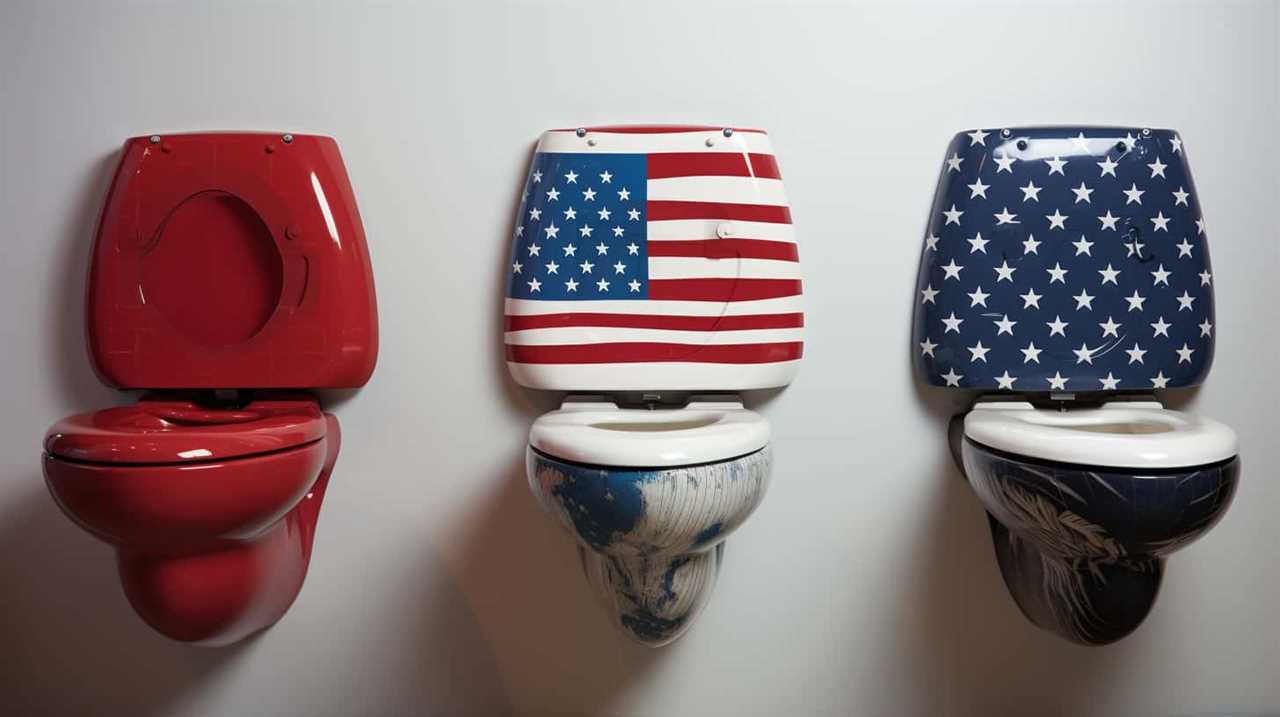
Why Toilet Paper Dissolves in Water
We can understand why toilet paper dissolves in water by examining its specific composition and manufacturing process. Here are four reasons why toilet paper dissolves easily:
- Fiber type: Toilet paper is made from softwood or hardwood fibers that have been processed to break them down into individual fibers. These fibers are shorter and less dense than those used in tissues, making them easier to break apart in water.
- Manufacturing process: Toilet paper is manufactured using a process called creping, which involves scraping the paper off the drying cylinder with a blade. This creates a textured surface that allows water to penetrate and break down the fibers more easily.
- Thickness: Toilet paper is thinner than tissues, which means it has a larger surface area relative to its volume. This increased surface area allows water to come into contact with more fibers, speeding up the dissolution process.
- Biodegradability: Toilet paper is designed to be biodegradable, meaning it can break down naturally over time. This is important for the environment, as it reduces waste and prevents clogs in plumbing systems.
Understanding these factors helps us appreciate why toilet paper dissolves in water, making it safe to flush without causing plumbing issues.
The Impact of Tissues on Plumbing Systems
Sometimes tissues can cause problems in plumbing systems. Unlike toilet paper, tissues aren’t designed to dissolve easily in water. When flushed down the toilet, tissues can accumulate and clog pipes, leading to costly and inconvenient plumbing issues.
Regular plumbing maintenance is crucial to avoid such problems. It’s important to be mindful of what’s flushed down the toilet to prevent blockages. Tissues, with their slower decomposition rate, can create a build-up over time, causing blockages in the plumbing system.

To ensure the smooth operation of your plumbing system, it’s recommended to dispose of tissues in the trash rather than flushing them down the toilet. By following proper plumbing maintenance practices, you can prevent clogs and keep your plumbing system in good working condition.
Environmental Concerns With Flushing Tissues
How do tissues contribute to environmental concerns when flushed down the toilet?
- Paper waste management: Tissues are made of a different type of paper than toilet paper, which makes them less suitable for the wastewater treatment process. Unlike toilet paper, tissues are designed to be more absorbent and durable, which means they take longer to break down when flushed.
- Environmental impact: When tissues are flushed, they can clog pipes and cause blockages in the sewage system. This can lead to costly repairs and maintenance. Additionally, the slower decomposition of tissues compared to toilet paper can put a strain on wastewater treatment plants, as they aren’t designed to efficiently handle large amounts of tissue waste.
- Increased water usage: Flushing tissues requires more water to ensure they’re properly carried away. This leads to increased water consumption and puts a greater demand on our water resources.
- Microplastic pollution: Tissues often contain microplastics, which can be released into the environment when flushed. These microplastics can contribute to water pollution and harm marine life.
Considering these environmental concerns, it’s important to dispose of tissues in the appropriate manner, such as in a waste bin, to minimize their impact on our environment.
Alternatives to Flushing Tissues: Proper Disposal Methods
For proper disposal of tissues, it is important to consider alternatives to flushing them down the toilet. Not only can flushing tissues lead to clogged pipes and damage to plumbing systems, but it also poses environmental concerns. Fortunately, there are several options available for the proper disposal of tissues. One option is to use biodegradable tissue options, which are designed to break down naturally over time. These tissues are made from materials that are more easily decomposed, reducing their impact on the environment. Another option is to recycle used tissues. Although this may seem unusual, some recycling programs accept tissues as part of their paper recycling stream. By properly disposing of tissues through these alternatives, we can minimize waste and contribute to a more sustainable future.

| Alternatives to Flushing Tissues | ||
|---|---|---|
| Biodegradable Tissue Options | Recycling Options for Used Tissues | Proper Disposal Methods |
| Use tissues made from biodegradable materials that break down naturally over time. | Some recycling programs accept tissues as part of their paper recycling stream. | Dispose of tissues in designated waste bins or compost them if possible. |
| Look for biodegradable tissue options at your local stores or online. | Check with your local recycling facility to see if they accept tissues for recycling. | Avoid flushing tissues down the toilet to prevent clogs and damage to plumbing systems. |
| Biodegradable tissues can be a more eco-friendly option for everyday use. | Consider reducing tissue waste by using handkerchiefs or reusable cloth wipes. | Educate others about proper tissue disposal methods to promote environmental responsibility. |
Frequently Asked Questions
Can Tissues Be Used Interchangeably With Toilet Paper?
Tissues cannot be used interchangeably with toilet paper due to their different composition. Tissues are thicker and more likely to clog pipes, leading to plumbing issues. Additionally, tissues have a higher environmental impact compared to toilet paper. Sustainable alternatives include bidets and reusable cloth wipes.
Is It Safe to Flush Facial Tissues Down the Toilet?
Flushing facial tissues down the toilet is not safe due to their composition and potential to clog pipes. It also has negative environmental impacts. Use alternatives like disposing in the trash or using biodegradable tissues.
What Happens if You Accidentally Flush Tissues Down the Toilet?
Accidentally flushing tissues down the toilet can lead to clogs and blockages in the plumbing system. To avoid this, it is important to dispose of tissues properly in the trash rather than flushing them.
Are There Any Health Risks Associated With Flushing Tissues?
There are potential environmental concerns associated with flushing tissues. It is advisable to use alternatives such as disposing of tissues in a waste bin or using toilet paper, which is designed to dissolve easily in water.

Are There Any Specific Types of Tissues That Are Safe to Flush?
When it comes to flushing tissues, there aren’t any specific types that are safe to flush. It’s best to stick to biodegradable alternatives to toilet paper to minimize the environmental impact of flushing.
Conclusion
In conclusion, it’s crucial to remember that flushing tissues can lead to plumbing issues and harm the environment. Unlike toilet paper, tissues don’t dissolve easily in water and can clog pipes.
To avoid these problems, it’s essential to dispose of tissues properly in the trash. By doing so, we can prevent costly plumbing repairs and protect our planet’s delicate ecosystem.
Let’s make the responsible choice and keep our pipes clear and our environment clean.
